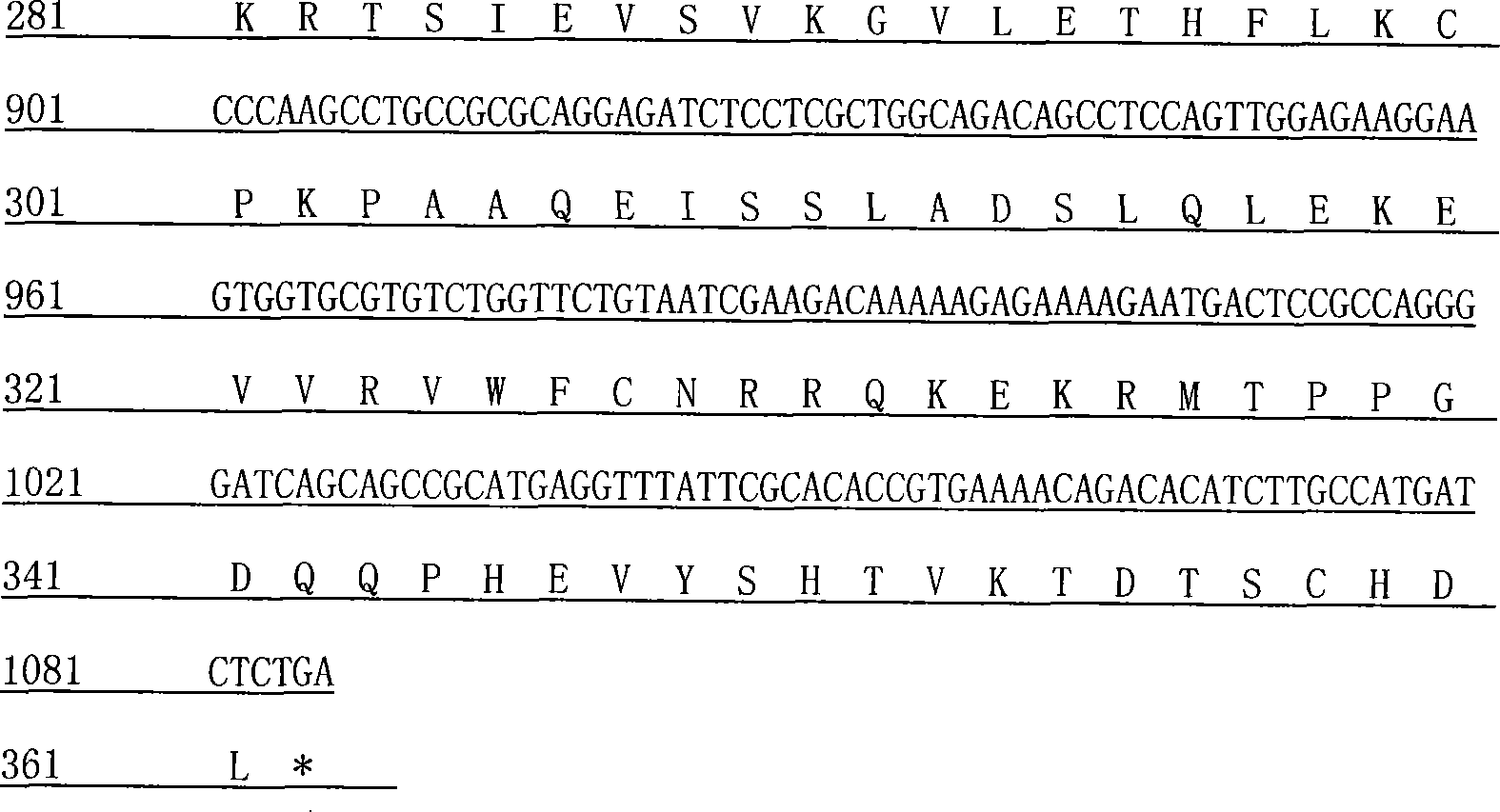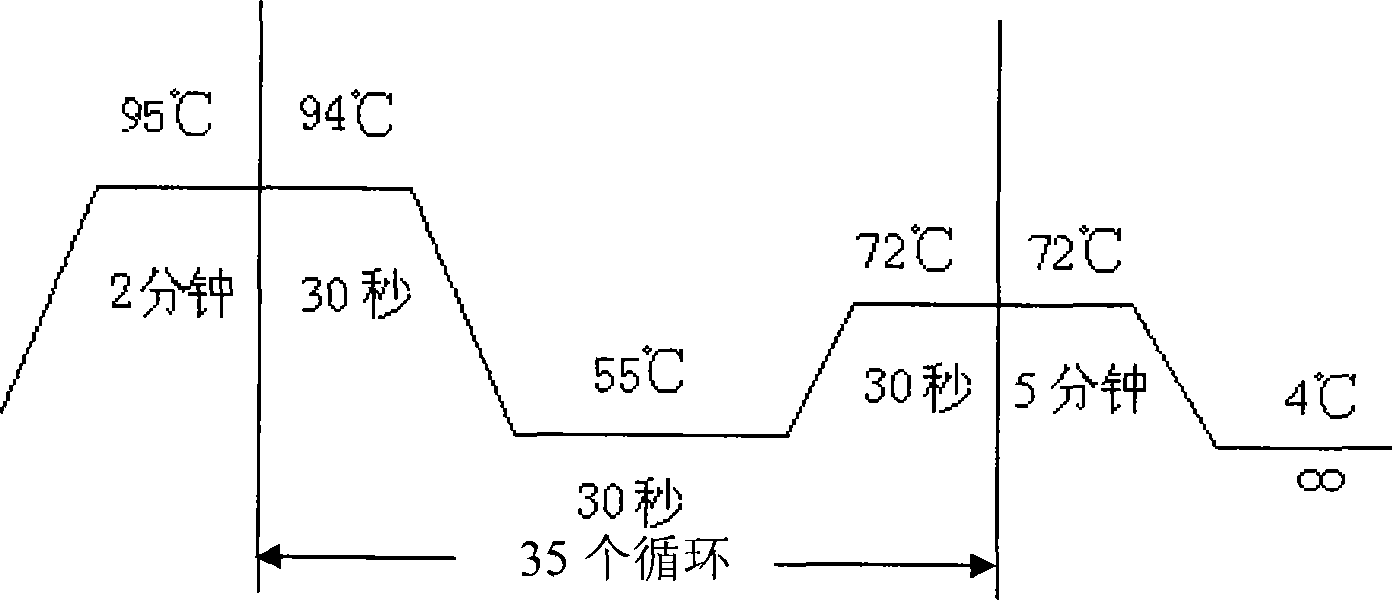Reagent case for detecting POU3F4 gene 499C>T mutation
A technology of POU3F4 and detection reagents, which is applied in the direction of microbial measurement/inspection, biochemical equipment and methods, etc., and can solve the problems of limited research methods, deep inner ear, slow progress, etc.
- Summary
- Abstract
- Description
- Claims
- Application Information
AI Technical Summary
Problems solved by technology
Method used
Image
Examples
Embodiment 1
[0052] 1. Preparation of blood sample DNA of the subject to be tested
[0053] 1. Research object
[0054] A Chinese family with X-linked genetic congenital severe hearing loss, the patient showed congenital severe hearing loss, temporal bone CT examination showed enlarged internal auditory canal, showing an X-linked recessive inheritance pattern. A total of 17 family members were investigated, including 10 males and 7 females. There were 2 patients, both male, with the same audiological phenotype. According to the following method, 8 of them, including 5 females and 3 males, were tested for the POU3F4 gene, and it was found that 2 male patients were hemizygous for the mutation, and the other normal male gene was wild type, and a total of 5 female patients were detected The 3 heterozygous carriers were the mother, grandmother and aunt of the proband. No mutations were found in the other two women. In addition, 110 normal controls with normal hearing and no genetic backgrou...
Embodiment 2
[0087] 1. Purification of PCR products——96-well plate method
[0088] 1. Add 50 μl sterile water to the 96-well plate containing the PCR product and mix well.
[0089] 2. Transfer it to the Millipore purification plate, put it on the vacuum pump for about 3 minutes, and see that there is no water in the purification plate.
[0090] 3. Add 50 μl of deionized water to the purification plate again, and continue to filter until there is no water in the purification plate.
[0091] 4. Remove the purification plate from the vacuum pump, add 20 μl of deionized water to the plate, let it rest for 15 minutes, shake it for another 15 minutes, and then suck it into a new 96-well plate.
[0092] 5. Store in a -20°C refrigerator.
[0093] 2. Quantification by electrophoresis
[0094] 1. Sample preparation
[0095] Take a 96-well spotting plate, add 6 μl of sample buffer to each well, remove the PCR product (2 μl) from each well of the cavity plate containing the PCR product, transfer to ...
Embodiment 3
[0108] 1. Purity and dosage requirements of PCR product DNA template
[0109] DNA purity: OD 260 / OD 280 = 1.6 to 2.0.
[0110] DNA concentration: PCR product 10ng / μl.
[0111] DNA consumption:
[0112] PCR product
[0113] 100-200bp 1-3ng
[0114] 200-500bp 3-10ng
[0115] 500-1000bp 5-20ng
[0116] 1000-2000bp 10-40ng
[0117] >2000bp 40-100ng
[0118] 2. Sequencing reaction
[0119] 1. The reagents required for the sequencing reaction should be freshly prepared, and the reagents that need to be sterilized by autoclaving must be sterilized before use. The equipment required for the sequencing reaction (such as 384-well plates, tips, etc.) should also be clean and sterile.
[0120] 2. In order to ensure the freshness of sequencing samples and reaction reagents, it should be operated on ice when adding samples.
[0121] 3. The current reaction system is 5 μl, and the amount of various reagents added is shown in Table 2.
[0122] Table 2...
PUM
 Login to View More
Login to View More Abstract
Description
Claims
Application Information
 Login to View More
Login to View More - R&D
- Intellectual Property
- Life Sciences
- Materials
- Tech Scout
- Unparalleled Data Quality
- Higher Quality Content
- 60% Fewer Hallucinations
Browse by: Latest US Patents, China's latest patents, Technical Efficacy Thesaurus, Application Domain, Technology Topic, Popular Technical Reports.
© 2025 PatSnap. All rights reserved.Legal|Privacy policy|Modern Slavery Act Transparency Statement|Sitemap|About US| Contact US: help@patsnap.com



